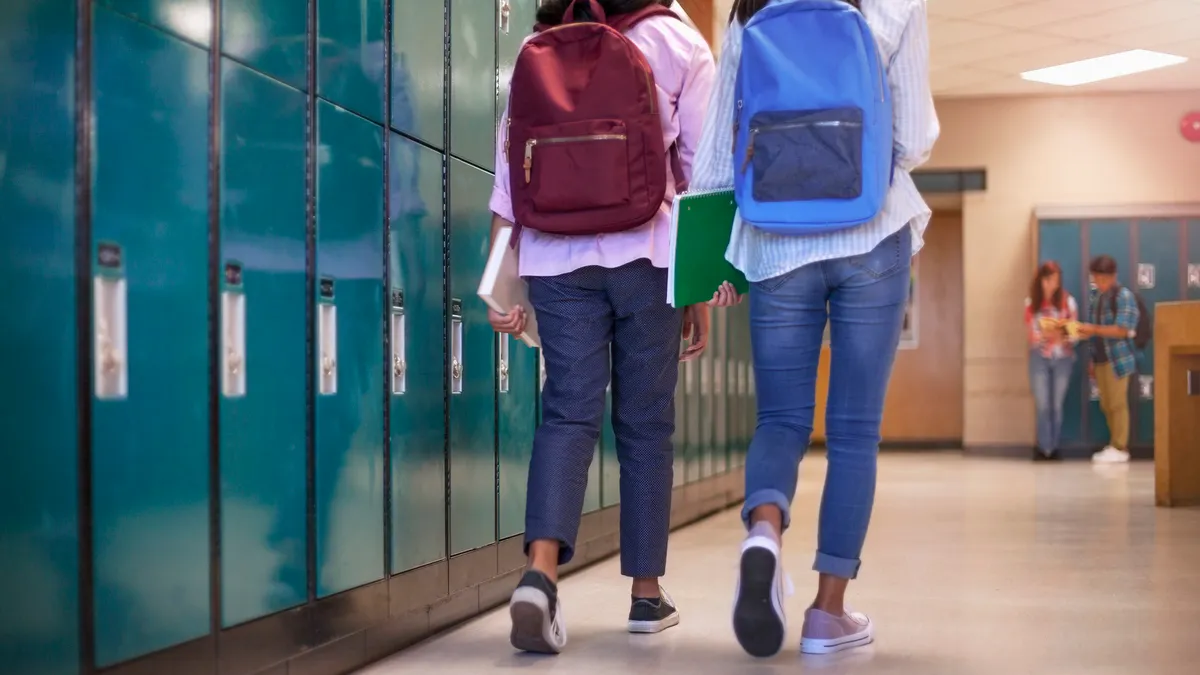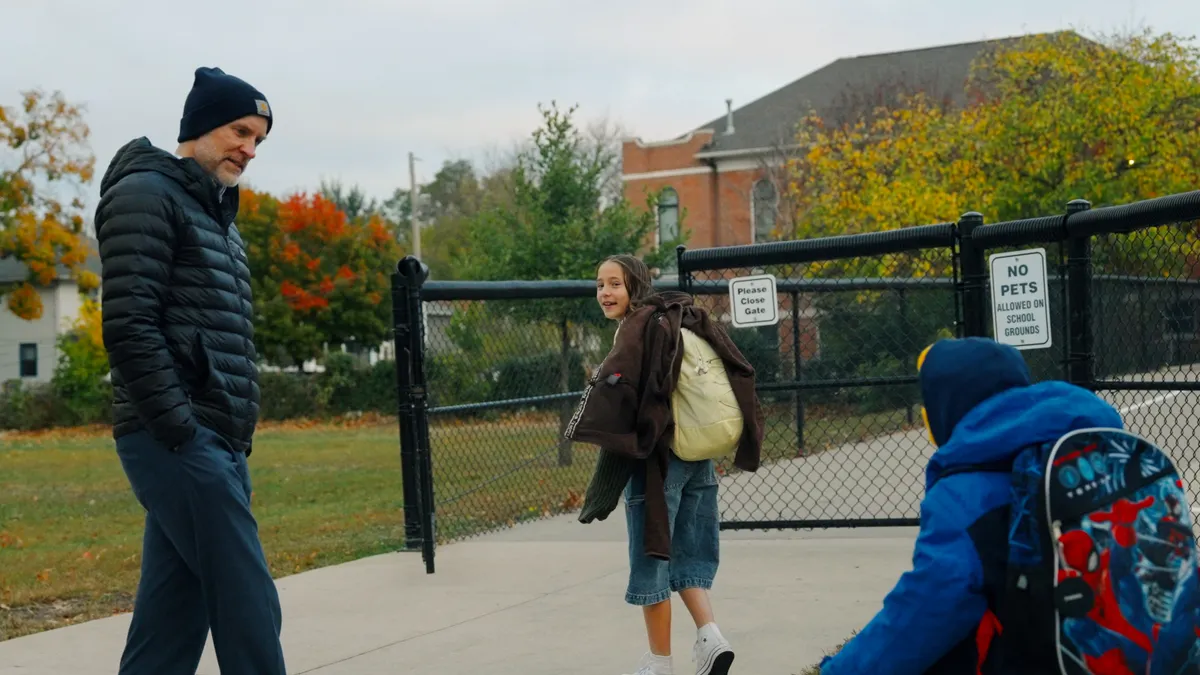A child visiting the school nurse over a stomachache isn't out of the ordinary. But for one young student in Oregon’s Umatilla School District recently, the cause of her pain didn’t appear to be physical.
Rather, she expressed concern about her parents.
The student’s anxiety arose from the Trump administration’s January announcement that it would enforce stricter immigration policies — even allowing U.S. Immigration and Customs Enforcement officers to enter schools and other sites like colleges, houses of worship and hospitals previously considered "protected areas."
Though school officials are advised to avoid political conversations with students, some still ask a lot of questions or say they’re worried about the news on immigration enforcement, said Heidi Sipe, superintendent of Umatilla School District.
For the student who had a stomachache, Sipe spoke with her directly through the school nurse’s phone. During that conversation, Sipe told the student about the district’s procedures and what would happen if ICE came to her school.
“She did feel much better and needed that information,” Sipe said, adding that the nurse also followed up with the student’s parents.
The district procedures were shared with families through in-person meetings and a video from Sipe.
In the video, the superintendent explains that schools are not allowed to ask about a student’s immigration status nor do they collect Social Security numbers during registration. When a law enforcement officer, who could be local police or federal immigration officials, enters a school, parental permission must be given before the officer can speak with their child, she added. The only exception to that procedure is if there is a judicial warrant.
Umatilla School District serves 1,500 students in rural eastern Oregon. The high-poverty school district has the second-highest percentage of English learners in the state, Sipe said.
Nationally, the fear over immigration enforcement officers entering schools and the impact that would have on families is a reality for many students and staff.
The uncertainty itself can take a toll on a student’s mental health and have psychological effects — like heightened anxiety or sadness — not just for students from immigrant families, but also for their classmates, said Prerna Arora, an associate professor of psychology and education at Columbia University’s Teachers College.
Since the immigration policy landscape shifted under Trump, local news reports have highlighted cases of students not attending school in states like in Colorado, Michigan and Utah because they’re worried about ICE. To date, there have been no confirmed reports of ICE actually entering schools.
Umatilla School District’s student attendance has remained relatively steady, Sipe said. Schools contacted parents who they thought might be worried about sending their children to school, to explain the district’s immigration procedures, Sipe said, and they are still sending their children to school.
Where students aren’t showing up to school, Arora said, their learning will suffer along with their emotional health. “One of the things we know about kids and academics is that when kids start doing poorly in school, mental health issues often follow.”
School culture makes a difference
Before offering mental health services to help students’ social-emotional development and needs during this uncertain climate, Arora said, schools should be providing basic supports to the school community by explaining the laws and procedures surrounding immigration issues. Doing so can “help people feel a bit more safe,” she said.
Some schools have partnered with legal organizations to provide after-school law clinics or informational sessions for parents about immigration policies and enforcement, Arora said. “I think it’s really important for schools to also underscore that they want children there.”
Investing in building a strong school culture can play a big role in making students and families feel safe — and help ensure students attend school and succeed academically, Arora said. Factors to consider range from the kind of posters displayed on classroom walls to the variety of languages used in messaging.
Schools should talk with students about this ongoing change in immigration enforcement, Arora said. Doing so creates an opportunity to address students' misconceptions about what could happen to them, their friends or their family. These conversations can also deliver emotional support to students who are fearful, she added.
“Unfortunately, we often think that children don’t notice things … or we don’t want to plant ideas in their head. But a lot of kids hear things on the news, from their families, from their peers on the playground — and addressing misconceptions about what’s happening or what could happen is a critical part of what schools can do,” Arora said.
Because there haven’t been local situations involving immigration enforcement, Sipe said her district has held off from holding broader conversations on the matter.
“We don’t want to create fear or concern that might actually be present in a child,” Sipe said. “The other thing is, we really are trying to keep all of the political conversations out of schools, and so much of this conversation is very political.”
Mental health resources are critical
Umatilla School District is also continuing to offer after-school and summer programs, along with a wide array of mental health supports, Sipe said. The district, for instance, employs behavior specialists and school counselors.
In addition, Umatilla partners with external counseling providers. When a child’s needs exceed a school’s ability for support, the district refers the student to one of those outside providers, and the district covers the cost, Sipe said. While these services can apply to any student for a variety of issues, they can also benefit students experiencing mental health challenges related to immigration.
“One of the things that is significant, in particular about the immigration piece, is that because we have such a strong awareness of these resources and offerings for our community and to our kids, a lot of students will self-refer,” Sipe said.
A lot of students even seek these outside resources themselves through the district’s website. The district budgets $150,000 annually for the initiative each year, she said, but it has yet to fully use the total amount allocated.
Despite the heightened nationwide wide concern now, anxiety over immigration is not a new issue for families in Sipe’s district.
“I can’t necessarily say that things are exceptionally different for us, because this is a very normal conversation in our community,” Sipe said. “We try our best to make sure that all students in our schools are welcomed, safe and provided great opportunities, and our kids know that, and school is a very safe space.”



















